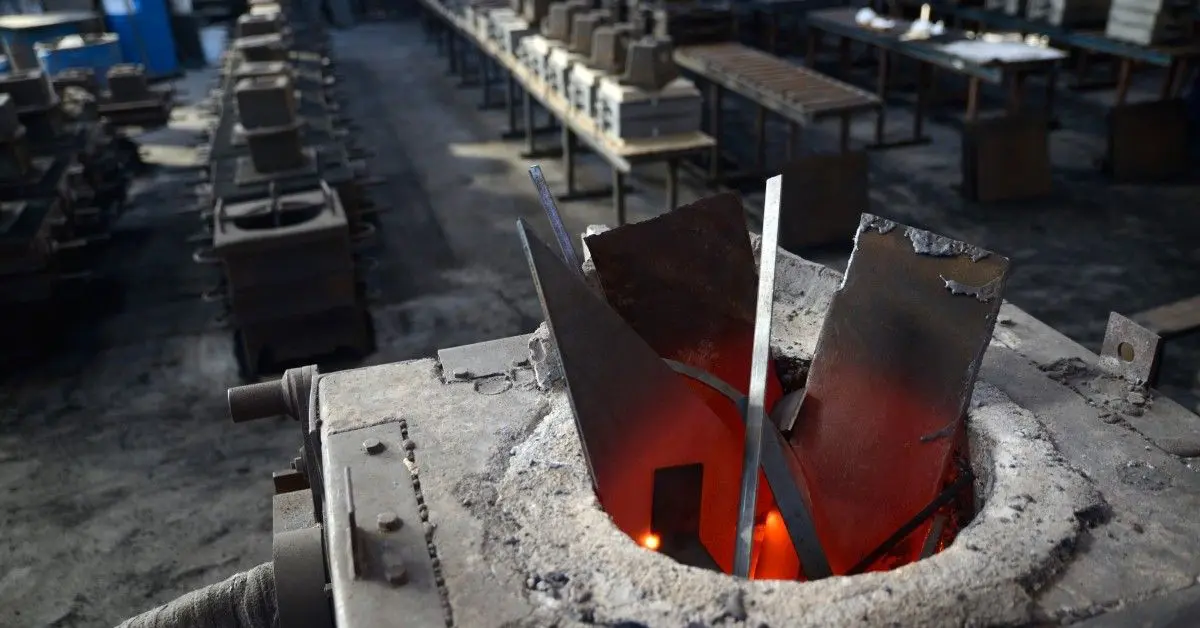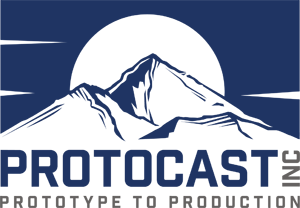
January 15, 2020 | Prototype Casting
Permanent Mold Casting for More Efficient Product Manufacturing
When most people think of casting, they think of the sand casts used to produce intricate parts and products. While yes, sand casting is one of the most recognizable forms of casting and is widely used as a favored production method, it is not always the most efficient type of cast — especially if your priority is quick production.
For customers who are looking for a casting method that is cost-efficient and easily scalable, permanent mold casting could be your best option. By eliminating the need for single-use sand casting, permanent mold casting reduces the overall manufacturing time and casting cost.
At Protocast Inc., your local Denver area foundry, we are proud to provide businesses with our state of the art permanent mold casting services. If you are looking for a foundry that can create a permanent cast for your next metal product, be sure to get in touch with a member of our team today.
How Does Permanent Mold Casting Work?
Permanent mold casting, sometimes referred to as gravity die-casting, is a technique where a permanent mold is used to create the shape of a product rather than sand. Permanent molds consist of two metal die blocks that have been machined to form a cavity when pressed together. The cavity die cut is specifically designed by our team to meet the specifications necessary for your product.
Each mold is created using durable metals in order to ensure that the metal die blocks can sustain repetitive use. While a die block can be made from pretty much any metal, with cast iron, steel, and aluminum being the most common.
When a mold has been completed, the metal die blocks are pressed together to form the cavity. Once the carefully machined blocks have been aligned perfectly, the mold is made and is ready to produce a cast.
When casting, it is important to consider what metals or alloys will be used to create the cast. For more durable products, it is important to use a heavier metal like iron and copper alloys, while lighter alloys like zinc-base, magnesium, and aluminum fare better for smaller, more intricate products.
Permanent Mold Casting Techniques
While permanent mold casting always features machined metal die blocks that form a cavity for the liquid metal to take form, there are different techniques for executing the cast. Below, we have listed the two most popular techniques, although we predominantly utilize gravity-based mold casting services, here in our Denver foundry.
Low-Pressure Permanent Mold
Low-pressure permanent mold casting is a method of casting that applies a minimal amount of pressure to the mold. In this method, up to 15 lb/sq in. is applied to help fill the die. Using this method helps load the die and reduce the chance of surface imperfections on the cast.
Gravity Permanent Mold
At Protocast Inc., we utilize a variation of gravity permanent mold casting known as tilt-pour permanent mold casting. By definition, gravity mold casting is any type of situation where gravity is used to distribute the flow of metal within the die.
The first technique used in gravity permanent mold casting is known as static pouring, where metal is poured into the top of the mold and gravity helps the liquid metal move downwards — filling the cast. The second technique is known as tilt pouring, where the metal is poured into a basin on the mold when it is lying horizontally and the metal mold is slowly rotated vertically as the metal flows into the basin of the metal die. Our process is a more intricate version of tilt pouring.
Permanent Mold Casting With Protocast Inc.
At Protocast Inc., we have purchased a production permanent mold machine for our contracted casting projects. This innovative machine is designed to hold the metal die blocks together and rotate them as the casting process is taking place.
What makes our permanent mold casting machine so effective is that it fully automates the permanent mold casting process. All we have to do as operators is pour the liquid allow into a collection tray and then let the machine do the rest.
Because this machine does most of the work, it has allowed our team to efficiently produce large volumes of the cast and machined parts — in turn making the process pain-free and efficient for your commercial operation as well. So if you need a large volume of cast parts (500–100,000), we urge you to contact us today.

Why Choose Permanent Mold Casting?
When it comes to developing a new product or part, every detail counts — including what methods of production that you use to develop it. Below, we have listed the most notable benefits of producing a cast using a permanent mold.
- Consistent Geometry – One of the main reasons that someone might use permanent mold casting to develop a product is because the molds help ensure that the dimensional accuracy of the product is high. Because each metal die block is carefully machined, they hold their form throughout the entire process.
- High Production Rate – As we mentioned earlier, permanent mold casting is ideal for large production goals. The production rate remains high and there is minimal scrap loss between the repeated use of each mold.
- Surface Finish – Last, but certainly not least, permanent mold casting is an excellent technique for ensuring high-quality surface finishes and grain qualities. What makes this method so great is that it combines the qualities of sand casting and die casting to create flawless parts and prototypes.
Contact Us Today to Get Your Project Started!
Are you in the market for 500–100,000 cast parts? If so, we urge you to consider utilizing our permanent mold casting services to produce them! Simply reach out to our team to discuss your part design so we can get the mold machining process started.
Are you unsure of what service you need to develop your next product? Contact a member of our team today to discuss which of our services might benefit you the most. We look forward to hearing from you.


